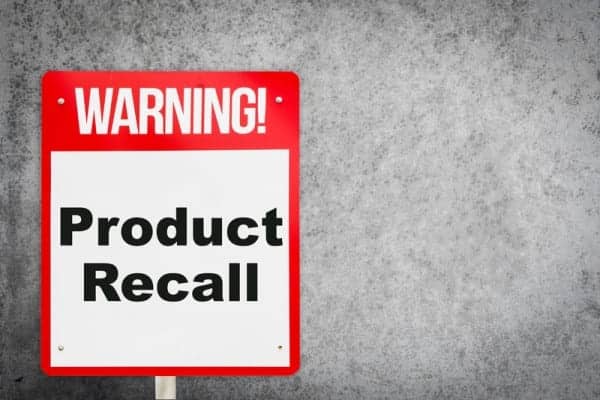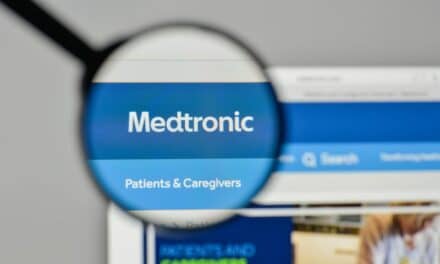The medical device recall process can be cumbersome. Improve it with these key steps.
By Ann Carlson
Medical organizations often look to healthcare technology management (HTM) professionals to not only service and maintain equipment, but also to address hundreds of medical device recall notices annually. The U.S. FDA reported 1,078 recalls in 2020 alone.
“I get them pretty much daily,” says Mike Schliebe, HTM/clinical engineering product manager for St. Luke’s Health System, a healthcare organization based in Boise, Idaho, with eight medical centers and 339 clinics in Idaho and Oregon.
Of course, not every medical device recall affects all departments or even all hospitals. Recalls also range in severity. Many alerts require minor onsite repairs or software updates; others necessitate the isolation or removal of the equipment.
“Every hospital has a different mix of products, so their task is to search through those to see which ones are impacting their facility,” says Debra Dominianni, director of healthcare product alerts and recalls for ECRI, an independent, nonprofit organization focused on patient safety.
But sorting through which product recall notifications are relevant in a timely manner requires a coordinated team effort throughout the entire healthcare organization.
Managing the Workflow
Often generated by the manufacturers themselves, medical device recall notices come to healthcare organizations from multiple sources in multiple formats. In an increasingly connected digital world, it is perhaps surprising how many of these recall notices still arrive via snail mail, a common method for the FDA to disburse this information.
HTM professionals are often tasked with sorting through these recall notices to identify the impacted departments. They then assign the relevant alerts to the personnel responsible for implementing the corrective action. Often, biomeds also need to follow up with the manufacturer, then submit the proper documentation to close out the recall alert.
Assigning each recall management task manually can be very time-consuming, especially for larger healthcare organizations with multiple locations. To streamline the process, ECRI offers an automated recall management program called Alerts Workflow. “By automating a lot of that, you gain some flexibility for how you manage recalls throughout the organization,” Dominianni says. “You can drastically improve the safety and the efficiency by not having recalls that slip through the cracks and also being able to act on those recalls as quickly as possible.”
The FDA classifies medical device recalls by severity. Class I recalls, for instance, involve a defective product that could cause serious adverse health consequences or even death while Class II recalls address products that may cause temporary or medically reversable health consequences. Finally, Class III recalls—the mildest—point to products that are unlikely to cause adverse health consequences.
Healthcare organizations tend to follow the same procedures, regardless of the recall classification. The main difference is the time allotted to address it. Class I recalls are usually addressed within 24 hours, Class II within 48 to 72 hours, and Class III within five days.
At the VA North Texas Health Care System in Arlington, for instance, biomeds handle an average of four reusable medical device recalls per month, according to biomedical engineering department member Adetoun Komolafe. The team also supports the clinical service responsible for recalls of pharmaceuticals, prosthetics, disposable medical devices, and personal medical devices.
“Considering that the Class I recall is the most severe of all three recall classes, and could predictably cause serious health problems or death, it is treated with great importance and completed within the recommended time allocated for it,” says Komolafe. “Nevertheless, we treat all recalls with great importance irrespective of the recall classification.”
Updating the Medical Device Recall Database
Across manufacturers, there is still no standardized way to communicate which products are affected by a medical device recall. Matching the information provided in the recall notice with any affected devices in the healthcare system’s database can require “deductive reasoning,” according to Toni Dodge, associate business intelligence developer for OhioHealth, a Columbus-based network of 12 hospitals and more than 200 ambulatory sites.
The best way to meet this challenge is to keep the healthcare system’s database as up-to-date and consistent with the manufacturer’s naming conventions as possible. “I’m really picky about it, and my hope is that all the people putting the information into the system are just as picky,” says Dodge, who manages a database listing 60,000 unique devices.
Of course, maintaining that consistency is difficult when the database is continuously being populated by multiple sources. Detecting discrepancies—such as duplicate entries for a device that might be known by multiple names, for example—can be daunting. Time constraints and staffing shortages often mean that these issues are left for a later date.
To help match product recall notices more easily with OhioHealth’s inventory, Dodge focuses on listing exact model numbers and precise manufacturer product names for every device in the database. For new devices, she often requests a screenshot of the product name during installation so that she can enter the name exactly as it appears into the database.
“For me, it’s a constant cleanup trying to put it all as the manufacturer has named it, so I try to get model numbers because I’ve found that wasn’t always a priority in the beginning,” she says. “It’s always going to be a work in progress, and I know from talking to other hospital systems that it’s a [widespread] challenge.”
At St. Luke’s, Mike Schliebe’s team helps update the model numbers and product names listed in the database at every routine maintenance check. “It’s part of our preventive maintenance process,” he says. “When it’s not in the database, they should be sending it to our database administrator to add that model in so that we can get it set up correctly.”
Schliebe is also focused on standardizing the database to align more consistently with ECRI’s Alerts Workflow system, which will promote more auto-matches between the model numbers in an alert and the affected products in the computerized maintenance management system (CMMS) database.
ECRI tries to take away some of the guesswork for clients by providing additional information for FDA recall notifications—in some cases, including micro-videos that offer visual aids to help with any repairs. Dominianni refers to this process as “translating” the recall notices into language and visuals that make it easier for hospital staff to identify quickly which devices are affected, which departments are involved, and what fixes or additional steps are necessary.
“We’re often translating and making those instructions clearer in our notifications,” she says. “Also, we canoften get them out quicker than the FDA because we have hospitals that will send ECRI letters they get from the manufacturers or problems that they’re running into with equipment. They’ll notify ECRI, so that in a lot of cases, we’re getting word out to hospitals weeks, months, and sometimes a year in advance of the FDA that there’s a problem.”
If specifics in a recall notice are vague, however, the next step is often calling the vendor or interfacing with the manufacturer’s technical support staff to find out exactly which of the healthcare system’s devices—if any—are affected by the recall notice.
“The vendor should have our complete inventory of whatever’s been sold to us, so we leverage off of them to help assist us on how we’re affected,” Schliebe says.
Toni Dodge says she also regularly connects with vendor representatives to compare their databases and ensure that both parties have identical information. “It’s to make sure that we’re both on the same page, that we both have the same information about whatever devices we have, so that when things come up, we’ve got the most accurate information on both ends,” she says.
Manufacturers regularly assist in other aspects of product recalls as well. Adetoun Komolafe’s first recall management experience involved working very closely with an infusion pump manufacturer. “We did require the manufacturer to carry out all inspection and correction of the devices,” Komolafe says. “Scheduling the vendor for the remediation exercise within the time window provided by the national program office was probably the biggest challenge we experienced. Nevertheless, the manufacturer was very efficient and handled the remediation exercise effectively.”
Often, manufacturers must replace and repair certain parts of a recalled device. “There are times that theimplementation of the scheduled repair is delayed from the manufacturer, and they are not always able to meet the national office timelines,” Komolafe says. “In instances where patient care could be affected, the availability of loaner equipment is always greatly appreciated.”
Improving Communication
Clear, consistent communication is perhaps the most important piece of product recall management. But with so many stakeholders involved—including regulatory agencies, manufacturers, vendors, HTM professionals, clinicians, and patients—it’s no wonder that achieving consistent communication is a constant challenge.
Luckily, there are several steps healthcare organizations can take to improve in-house communications; for example, advocating for better recall-management training for personnel, producing standardized written policies, strengthening communication between biomeds and clinical end users, and designating a specific point-person to assign all recall workorders to the appropriate staff member. Investing in more automated systems and processes, such as generating work orders, also streamlines the system and reduces errors.
“It’s important to have all the documentation in one place so that if there are any audits that need to be done, you have one source of truth, one place to go to find all of that information,” Dominianni says. “It’s also important to have patient safety and risk management executives involved and sponsoring those activities to help drive accountability and patient safety.”
Even so, there are plenty of recall-related communications that are outside of the healthcare organization’s control. For example, sometimes Schliebe’s team receives a recall alert before their vendors do. “We call the vendor, and the vendor’s tech support aren’t even aware there’s been a recall,” Schliebe says. “So, there’s a gap somewhere in the communications.”
The manufacturer is also responsible for ensuring that the tools for implementing the recommended action are not only made available, but in a timely manner. “[Manufacturers] must provide a corrective action for every posted recall, and this will require time to develop an acceptable remediation that is fully tested for patient safety,” Komolafe says. “We have received multiple recalls on the same device simultaneously because the initial mitigation was not sufficient. In the future, we look forward to a time where there would be a better communication of solutions to biomedical engineers in the hospital.”
Recalls involving software updates can be particularly frustrating. Manufacturers may not have a fix at the ready when the recall notice goes out, which means technicians might be able to isolate the problem but not implement a timely correction. This can leave some recall alerts open for months—even up to a year.
“It’s a tracking nightmare,” Schliebe says. “Sometimes, they haven’t even started developing [the new software]; they were just made aware of the problem, and they don’t know what the software is going to be yet.”
It often falls to the biomeds to keep checking in with the manufacturer for updates. “When handling software recalls, biomedical engineers are careful and selective about pushing updates and patches on medical devices because some of these patches could damage the device, or potentially harm the patient,” Komolafe says. “Our documented security risk assessment tracks the responsible party for software updates; however,[manufacturers] at times tend to shift the responsibility to biomedical engineers regardless of the documented agreement.”
One potential solution? Developing better ways to anticipate certain recalls. “Some recalls are predictable—for example, software upgrades, cybersecurity patching, and out-of-date hardware,” Komolafe says. “Hopefully, in the future, new technology and artificial intelligence could potentially predict some of these recalls and help us act proactively.”
Komolafe also notes that sometimes manufacturers communicate directly with clinical end users about defective products, rather than with biomed departments, which is not ideal. “Most manufacturers, in a bid to save costs and avoid FDA mandatory actions, would rather issue voluntary recalls directly to the clinical end users,” Komlafe notes. “This route does not guarantee accountability. At all times, hospitals should have a single point of contact for recalls, allowing for proper tracking and follow-up. Biomedical engineering actions on the HTM posted recalls are mandatory and promote accountability.”
Having a single, designated recall program administrator is key to managing communications to ensure that no alerts slip through the cracks, Schliebe adds. “Recalls come in from a variety of different ways,” he says. “They get sent to administrators, directors, the end user, the person calling in for parts. No matter where they come in from, those recalls should be forwarded over to the administrator for the recall program.”
While the overall processes for medical device recall management will likely remain the same, advances in technology have the potential to make the process smoother and more efficient. For example, the FDA has been promoting a unique device identification system that would allow hospitals to use a barcode scanner to pick up product information, such as serial and model numbers, directly from the device itself.
“With new technology and better communication, we anticipate that the communication gap will be bridged between manufacturers, the FDA, and biomedical engineers,” Komolafe says. “I foresee an improved system that continues to challenge the status quo and provide the best possible healthcare for our patients.”
Ann Carlson is a contributing writer for 24×7 Magazine. Questions and comments can be directed to chief editor Keri Forsythe-Stephens at [email protected].
How One Organization Improved Medical Device Recall Management
Standard product medical device recall management procedures across all sites can go a long way toward making the process smoother for healthcare organizations. After an internal audit five years ago revealed differences in how product recalls were handled across its locations, Boise, Idaho-based St. Luke’s Health System rolled out a uniform recall-management procedure for all of its facilities. The healthcare organization operates eight medical centers and 339 clinics in Idaho and Oregon.
“There were a wide variety of processes, and [the organization] didn’t feel it was the safety net that they wanted,” says Crystal Geibel, recall program manager for St. Luke’s Health System.
When Mike Schliebe, HTM/clinical engineering product manager, first started at the organization 17 years ago, the product recall-management process varied significantly by location. “Every site was kind of doing its own thing,” Schliebe says. “I was keeping track of recalls through spreadsheets or paths within Outlook, and all that data was held with me—so a single point of failure.”
The new system focuses on making the recall procedure more efficient and less confusing for staff members. For example, in the past, every alert was sent to all of the clinical engineering managers and some technicians, which often led to multiple staffers chasing down the same information. To avoid these duplicate efforts under the new system, all alerts first come to Schliebe or one of his fellow managers, who then serve as the point person for clinical engineering and assign work orders to specific HTMs.
This hierarchical system helps personnel understand their roles and what is expected of them throughout the process, Geibel notes. “The product alerts are assigned automatically throughout the business day by the recall software based on the account configuration and the suggested distribution of alerts,” she says. “For clinical engineering, the alerts are assigned to one coordinator who then communicates and reassigns to regional engineers.”
These days, Schliebe uses both the CMMS database and the ECRI Alerts Workflow system to help automate and crosscheck any recall alerts that come through on a given day. For added protection and flexibility, automated backups ensure these databases are up-to-date and accessible remotely when needed by employees.
During the past fiscal year, clinical engineering at St. Luke’s successfully closed out 522 recall alerts, which means Schliebe’s team handles an average of 10 notifications per week. Both Geibel and Schliebe credit support from the healthcare organization’s leadership for the program’s success. “I think the key thing to reiterate is communication,” Schliebe adds.
Geibel notes that, for the past several years, 95% of the recalls handled by clinical engineering have been completed within three days. As part of the process, positive statistics like this are shared at quarterly meetings as well as at regular environment of care (EOC) meetings to give department managers a sense of their total impact. “They’re doing the assignments everyday so diligently, so it’s really nice to share the results with them,” Geibel says.
She adds that even though Schliebe’s team handled more than 500 recalls last year, they kept their focus on patient safety each time. “[They] were so engaged and weren’t just clicking through them,” Geibel says. “They’re paying attention and making sure to really address those issues.”
St. Luke’s standardized procedures also help new employees get up to speed more quickly regarding their recall roles as well as understand the broader chain of responsibility. When Schliebe first started handling product recalls, he had to figure out a lot of these steps on his own. “My first experience was not knowing what the process was, who to reach out to, or what documentation and follow-up was needed,” he says. “I didn’t know who to turn to. I had to develop a process.”
Since the rollout of St. Luke’s new recall-management procedures, these issues have been addressed through better communication, improved automation, and clear, standardized protocols.
“The ultimate goal is to keep our patients and staff safe and to have equipment that is working correctly,” Schliebe says. “We have the ability, and we’ve got so much support to be able to get it done. Just being a part of the whole program has been great.”
—A.C.





